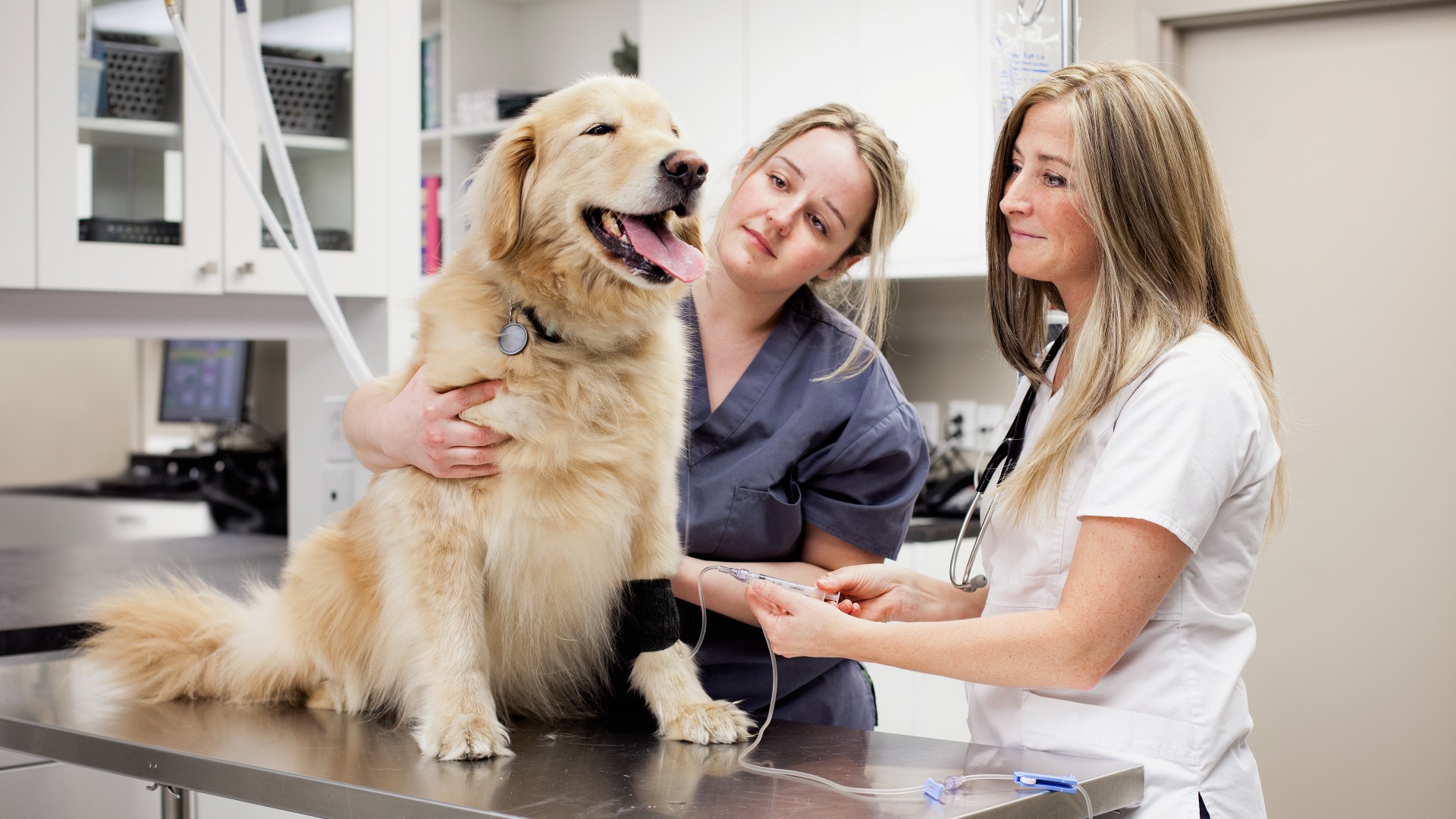Diabetes insipidus in dogs: a vet's guide
Although there is no cure for diabetes insipidus in dogs, it’s a rare condition that can usually be successfully managed

Diabetes insipidus in dogs is an uncommon condition. This is especially true when you compare it to the other form of canine diabetes: diabetes mellitus.
Diabetes mellitus is what you probably envision when you hear “diabetes.” Diabetes mellitus causes high blood sugar, requiring treatment with insulin, and the best diabetic dog food. Dogs with diabetes mellitus drink and urinate a lot, because they are spilling large amounts of sugar into their urine.
Diabetes insipidus also leads to increased thirst and urination. However, the urine of a dog with diabetes insipidus does not contain excess sugar. While the word “mellitus” means “honey sweet,” the term “insipid” literally means “lacking flavor.” Both conditions increase urine output, but the underlying causes are entirely different.
Fortunately, thanks to modern medicine, we no longer rely on taste-testing to distinguish between diabetes insipidus and diabetes mellitus! Read on to learn how diabetes insipidus is diagnosed, and what this diagnosis could mean for your dog.
What causes canine diabetes insipidus?
Urine output in dogs is controlled by a hormone known as antidiuretic hormone (ADH). This hormone is produced by the pituitary gland, which is located in the brain. From there, it travels through the bloodstream to the kidneys. Once in the kidneys, ADH has an “antidiuretic” effect, decreasing urine production and promoting fluid retention.
Diabetes insipidus is caused by inadequate ADH activity. This can have two unique causes. In some cases, the dog’s brain produces too little ADH. This is known as central diabetes insipidus, and it may be caused by a brain tumor, a congenital (hereditary) brain defect, head trauma, or other causes. In other cases, the brain is producing adequate ADH but the kidneys are not responding properly. This is called nephrogenic (kidney-caused) diabetes insipidus, and it may be caused by a congenital disorder to acquired kidney disease.
Both central and nephrogenic diabetes insipidus have the same net effect. Because the kidneys are not appropriately signaled to retain fluid, they produce excessive quantities of urine.
Diabetes insipidus in dogs symptoms
The primary sign of diabetes insipidus is increased urination. This is usually accompanied by increased thirst, because your dog needs to offset the increased fluid loss. Some dogs produce so much urine that they become incontinent, leaking urine while awake or asleep. Depending on the underlying cause of your dog’s diabetes insipidus, you may also notice weight loss, lethargy, vomiting, diarrhea, appetite changes, or neurologic changes.
There are many possible causes of increased thirst and urination, and diabetes insipidus is relatively uncommon. Therefore, your veterinarian will first rule out common conditions before considering diabetes insipidus. This will require a thorough physical exam, as well as blood and urine testing.
Once more common conditions have been eliminated, your vet may recommend testing for diabetes insipidus. This often involves a water deprivation test, which is performed in the veterinary hospital and assesses your dog’s ability to concentrate urine. Your veterinarian may also recommend a medication trial, to see how your dog responds to the medication that is used to treat central diabetes insipidus. In some cases, advanced imaging (such as a CT or MRI) or other diagnostics may be recommended.
Diabetes insipidus in dogs treatment

Diabetes insipidus is managed, not cured. Most dogs require treatment for the remainder of their lives. Fortunately, treating diabetes insipidus is relatively easy. Unlike diabetes mellitus in dogs, which requires twice-daily insulin injections, carefully regulated diets, diabetic dog treat recipes, and ongoing glucose monitoring, many cases of diabetes insipidus can be treated with a single medication.
Central diabetes insipidus (arising from the brain) is treated with desmopressin. This is a synthetic, man-made form of ADH, which replaces the ADH that the brain is failing to produce. Nephrogenic diabetes insipidus (arising from the kidneys) requires treatment of the underlying kidney disease. This may involve medication, prescription diets, or other treatments.
Desmopressin for dogs
Desmopressin is a synthetic form of ADH, used to treat central diabetes insipidus. Once in the body, desmopressin acts on the kidneys to decrease urine production. Desmopressin is often prescribed in the form of eye drops, allowing for easy dosing and rapid absorption. Alternative forms include oral tablets or injectable desmopressin.
Desmopressin is typically given once or twice daily. If necessary, though, your veterinarian may instruct you to give the medication as often as every eight hours. To minimize the risk of side effects, do not increase your dog’s dose of desmopressin without first talking to your veterinarian.
Diabetes insipidus in dogs life expectancy
In most cases of congenital (hereditary) diabetes insipidus, dogs lead relatively normal lives with treatment. However, some underlying causes of diabetes insipidus may have significant impacts. For example, if your dog’s central diabetes insipidus is caused by a tumor, your dog’s prognosis will depend on the type of tumor that is present. If your dog has nephrogenic diabetes insipidus caused by underlying kidney disease, your dog’s prognosis will depend on your ability to manage the kidney disease.
Summary
Diabetes insipidus in dogs is a complex condition, with multiple potential underlying causes. Before considering a diagnosis of diabetes insipidus, your veterinarian must first rule out other, common causes of increased thirst and urination. If your dog is diagnosed with diabetes insipidus, your veterinarian will determine whether your dog’s diabetes insipidus is originating within the brain (caused by underproduction of ADH) or within the kidneys (caused by decreased response to ADH). Identifying the source of your dog’s diabetes insipidus will allow your veterinarian to create an appropriate treatment plan.
PetsRadar Newsletter
Get the best advice, tips and top tech for your beloved Pets
Dr. Barnette is a graduate of the University of Florida, where she received both her B.S. in Zoology and her Doctor of Veterinary Medicine (DVM). She has 15 years of clinical experience as a small animal veterinarian, treating dogs, cats, and occasional exotic patients. She now works as a freelance veterinary writer, creating educational content for veterinarians, veterinary team members, and dedicated pet owners. Dr. Barnette lives in southwest Florida with her husband and daughter (plus two cats, a dog, and a rescued dove!) and enjoys kayaking, biking, and hiking. Learn more about Dr. Barnette at www.linkedin.com/in/catherinebarnette.

